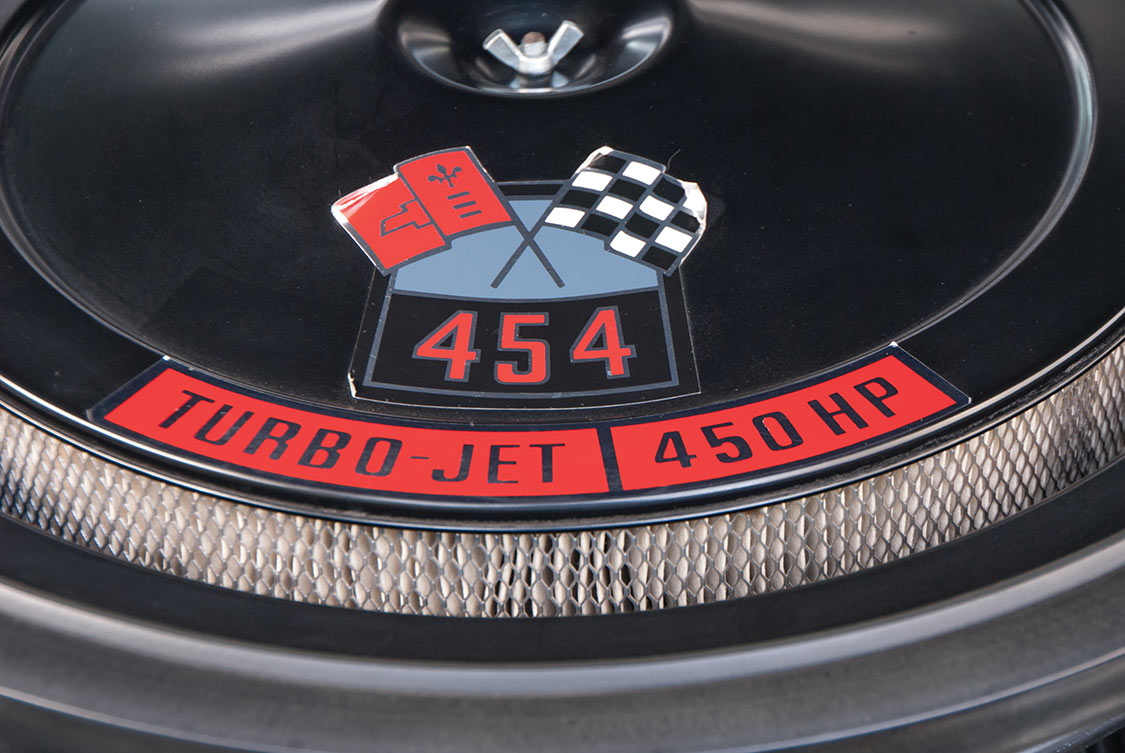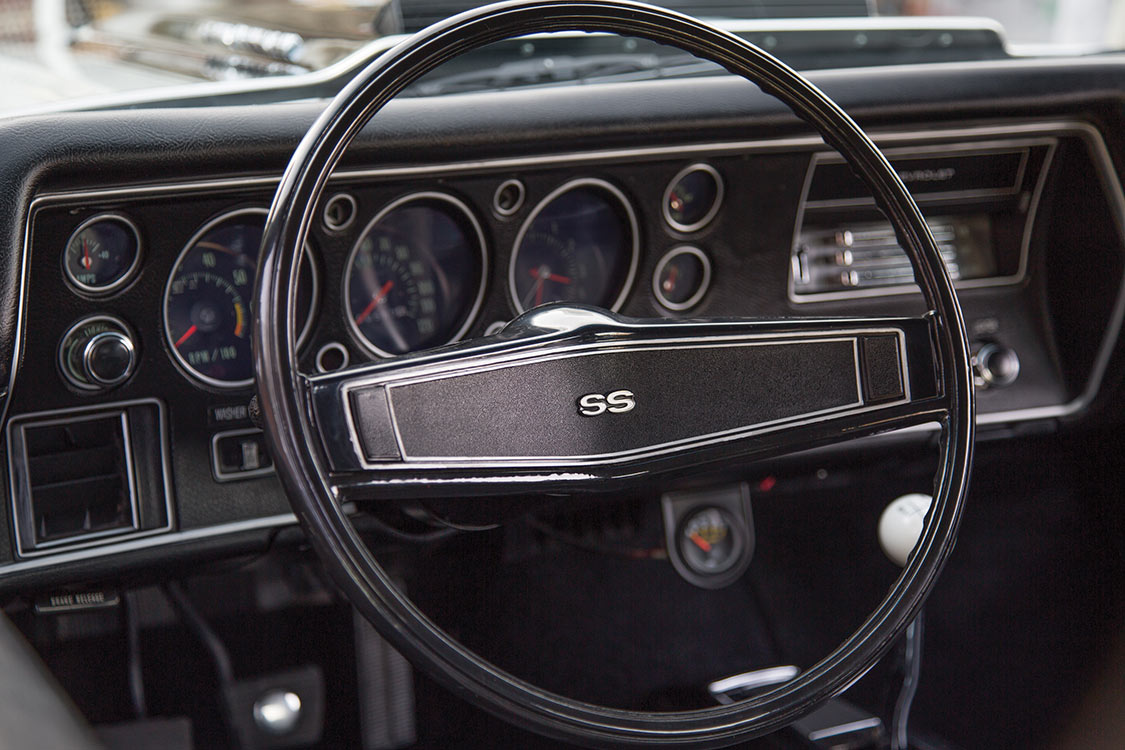 Lou Leto
.
February 08, 2023
.
All Feature Vehicles
Lou Leto
.
February 08, 2023
.
All Feature Vehicles

The year 1970 might be considered the pinnacle of the production muscle car wars that had been going on for six years. In stock car racing, the OEMs were trying to slide special components and experimental setups through tech inspections. In drag racing, these same manufacturers specifically engineered products that they supplied to compete in the Super Stock, Stock or Factory Experimental classes, championing their victories for attention while escalating performance packages in their vehicle catalogs. More importantly, the philosophy of “Win on Sunday, Sell on Monday” was being rewarded by buyers who flocked to the showrooms to acquire the biggest, the baddest, and the newest offerings as they became available.
I liked the drive, and I liked the noise. That experience stayed with me. After that, I always wanted one.



Chevrolet, already successfully selling Super Sport packages in Chevelles, had secretly evolved the 396- to 402-cu.-in. while still marketing their Big Block as the SS396. In 1970, GM relinquished its internal mandate that limited its intermediate models to 400 cubes. Chevrolet pulled out all the stops, and offered its biggest big-block engine yet, at 454 cu. in.
The most amped-up version of this bigger-than-big big-block, the LS6, came with a conservative 450-bhp rating. With 11:1 compression, rectangular port high-performance heads, a solid lifter cam and an aluminum intake topped with a 780 cfm Holley carburetor, it was built and offered for one purpose: win. Win the advertised horsepower ratings against the Dodge/Plymouth 426 Hemis, the Boss 429 from Ford, and the 455 offerings from Chevrolet’s GM cousins at Buick and Oldsmobile. No other manufacturer had the boldness to offer that high a rating in the entire era. The LS6 option caused a sensation that continues through today, 45 years later. It was rare then, representing less than 1 percent of the total 1970 Chevelle production, and it is even rarer now. A quick check of the dedicated website for LS6 registry reveals that only 146 are currently identified.



With only a few thousand originally built, how could this number of documented survivors now be so small? The attrition factor of vehicles raced for over four decades on dark remote highways and/or sanctioned tracks, took its toll on engines, drivetrains and sheet metal. They were cars. Muscle cars. Built to test who was the undisputed king of the road wherever the venue might be: stoplights, two lanes or racetracks. While the high-performance engines, heavy-duty transmissions and positraction rear axles, were capable enough, not all drivers were. Breakage from missed shifts often meant engine or transmission replacement. A known phrase, proven again and again during many exhibitions of speed on the blacktop, is that all the big, heavy, high-horsepower, muscle cars were typically “faster than their brakes,” even if equipped with the front disc brake option. The LS6 Chevelles that survived all the mechanical carnage and wrecks are considered in today’s collector market as the Holy Grail. In 2006, the most successful drag racing 1970 LS6 Chevelle in history went on the block at a Scottsdale auction, and after frenzied bidding a sale was hammered at $1.2 million.
Bill Maya confesses, “My first impression of a high-horsepower 1970 Chevelle was during a ride in the late 1970s from a friend of a friend.” While he wasn’t offered a chance to get behind the wheel, “I liked the drive, and I liked the noise. That experience stayed with me. After that, I always wanted one.”



Twenty years ago, Bill and his wife Kim were in a position to start collecting cars, always seeking out the most impeccable examples of what they liked. “In 2008, during a visit to a classic car auction in Monterey during Speed Week,” he stumbled upon his dream Chevelle. “After checking it out thoroughly, I learned that this LS6 had just been restored to perfection. It had only two miles on it since finished. Kim encouraged me to bid on the car,” he says.
Their LS6 is a numbers-matching example. It came with the build sheet that revealed it was built in the Leeds plant in Kansas City, Missouri, and delivered to Witte Chevrolet in Blue Island, Illinois. It was produced in Cortez Silver, with black SS stripes, along with the optional black vinyl roof. Studying the original build sheet makes Maya wish that he could “find and talk with the first owner, as someone specified the performance options,” he concedes, “including the LS6 engine, along with the M-22 4-speed that was the mandatory heavy-duty version if a manual transmission was selected to back up the 450-bhp engine.” Positraction and the performance axle ratio were also checked off boxes during the ordering process. The ZL2 ducted hood, boldly labeled as Cowl Induction, has a special flap that opens to allow outside fresh air access to the sealed air cleaner when the pedal is stomped to the metal. While all SS Chevelles featured a dedicated hood design, the highly desirable Cowl Induction option is much rarer.



“The impeccable restoration is what really caught our attention,” admits Maya. All the markings that were affixed during the 1970 factory assembly are preserved or were painstakingly duplicated during the restoration process. The distinctive markings are visible on the cylinder heads, the firewall and on the center section of the rear axle.
Maya is not the only one who appreciates the design features of the 1970 model. The boldness of the body styling changes from the prior year are a definite statement that this Chevelle was powerful; the blunt front end, with an SS-specific blacked-out grille creates an in-your-face attitude. Seen from the side, the bodywork reveals a less than subtle muscular emphasis around the front and rear fenders. The SS-specific rear bumper has a black resilient insert. Overall, the impression is that this is a force to be reckoned with. Remarkably, Chevrolet toned down any announcement that this was its biggest Big Block, adding only an SS454 insignia to the front fender flanks. While the air cleaner had a decal that identified the 450-bhp rating, there is no identification on the vehicle that this was equipped with a special LS6
engine option.




Since becoming part of the Maya motoring collection, the Mayas take their LS6, as they frequently do with all their unique and elegant vehicles, out for long weekend trips, touring up and down Southern California from their coastal city base. Embracing the Putting you first, keeps us first tag line offered by Chevrolet in their 1970 SS Chevelle advertising, Bill and Kim Maya often make their sterling LS6 their first choice.
The boldness of the body styling changes from the prior year are a definite statement that this Chevelle was powerful; the blunt front end, with an SS-specific blacked-out grille creates an in-your-face attitude.



Share Link